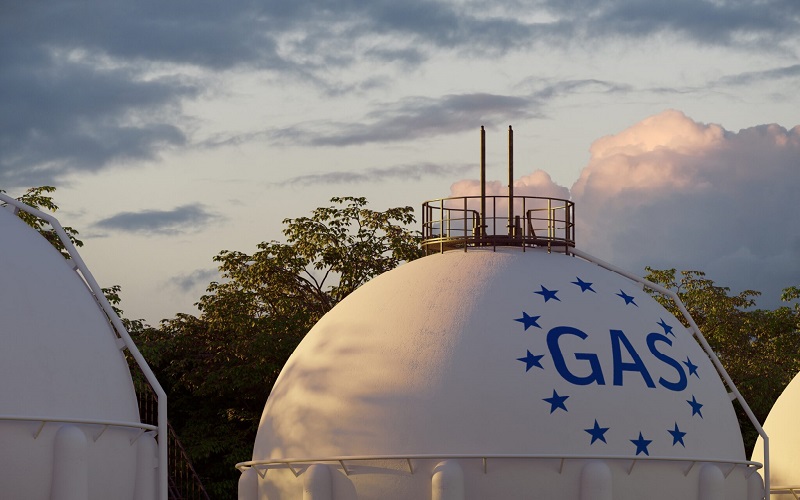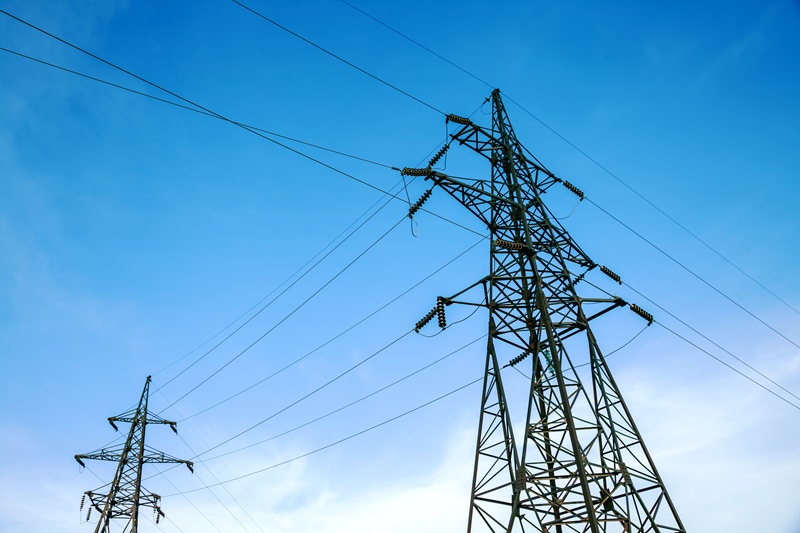During the last weeks, the price of electricity has remained at a constant level and the price of natural gas has dropped significantly thanks to favourable weather conditions. However, according to experts, the price of gas will move up again as the year progresses, but how high and how quickly will depend on the pace at which reserves will be restored.
| Price zone | Average exchange price | Change (previous week) |
| Estonia | 111,0 eur/MWh | +2,0% |
| Latvia | 111,0 eur/MWh | -0,3% |
| Lithuania | 111.5 EUR/MWh | -1,6% |
| Finland | 72.6 EUR/MWh | +19,2% |
The average price of electricity last week in Estonia was 111.0 €/MWh (+2.2 €/MWh compared to the previous week). The cheapest hour was on the night of Monday, 13 February, at 4 o’clock paying €12.68 per megawatt hour. The highest price for electricity had to be paid on the morning of Tuesday, 14 February at 8 o’clock with €200.57 per MWh.
The weather plays an important role in keeping the price of electricity at the current level, especially wind conditions favourable for the production of renewable energy, as well as temperatures. The price of natural gas also remains on the decline.
The average gas price for the week was 52 €/MWh (-2.8 €/MWh compared to the previous week). The price fluctuated at a 17-month low close to €50/MWh due to low demand. In addition, the level of gas reserves in the European Union is at the highest of the current period – at 64%. Market confidence in supplies was boosted by the return of Norway’s Troll gas field to the market after an unplanned shutdown.
As the year progresses, gas prices will move upwards
Last Friday, the market price of natural gas fell below EUR 50 per megawatt hour for the first time since August 2021. However, there is an even more important mark ahead. If you converted the European gas price into oil barrels, it would have cost $88 on Friday. Brent oil traded at 83 dollars. The last time gas was cheaper than oil was in July 2021, so, we may see it again soon.
The drop in prices is yet another sign of the easing of the energy crisis in Europe, but still prompts a reminder of recent price shocks. Although the price of gas is currently rather cheap in short-term comparison, it is still twice as high as the average of the last five years. It also encourages energy producers to once again choose natural gas instead of coal, which has risen to an important place to alleviate the crisis.
According to analysts, the countries cannot feel safe though. Due to limited supply, the price of futures transactions will be higher than the current level for the rest of the year, reaching EUR 60 per megawatt hour in December. Competition for liquefied natural gas (LNG) with Asia may increase demand and thus the price, but supply is not increasing rapidly.
According to a forecast published by Shell last week, Europe’s gas deficit will continue until the end of this decade. According to Shell’s annual LNG outlook, Europe will need 140 million tons of LNG until 2030, up from 50 million tons in 2018. The energy war against Europe launched together with the Russia-Ukraine war means a long-term structural challenge for the region, Shell estimates. According to the company, nearly 400 million tons of liquefied natural gas were traded internationally last year, but by 2040 the demand for this may exceed 700 million tons. The International Energy Agency (IEA), however, sees market saturation as early as 2025 according to one scenario. The main reason is climate policy.
The risk of a natural gas shortage has not yet completely disappeared
Repsol predicts that the price will remain higher in the long term due to obstacles related to increasing production. Between 2017-2021, a megawatt-hour of gas cost an average of €16.2, while last week it was €52.4.
The IEA warned that, despite the successful coping with the winter, Europe could still experience a natural gas deficit this year. The risk would materialize if Russia ended all pipeline deliveries and the cold weather returned. Fatih Birol, Executive Director of the IEA, considers the 2023-2024 winter to be the real test.
While Sweden reduced the risk level of power outages last week, according to the French transmission system operator RTE, the danger has still not completely passed, and the cold wave predicted for Central Europe at the end of February may still lead to outages if bad circumstances coincide. However, RTE estimates that the chances are significantly lower compared to the winter so far.
By the end of January, Europe had paid €768 billion to consumers in order to ensure energy supplies and reduce the effects of the crisis, estimates Bruegel, a Brussels-based think tank. Compared to the previous estimate from November, it is by over 60 billion more. The size of Europe’s COVID-related recovery fund is currently around 800 billion. In the conditions of rising interest rates and growing debt burden, this leaves countries with less and less fiscal leverage to manage the crisis. Although gas storage levels remain significantly higher than usual, reducing consumption remains key in the face of limited LNG production volumes.
European countries have been successful in this regard this winter. For example, Spain reported that it was able to reduce gas usage by 22% between August and January. At the same time, Spain imports 22.5 billion cubic meters of liquefied natural gas from Russia per year and does not plan to withdraw from this agreement. The German government, meanwhile, is urging importers to ditch Russian LNG to ensure independence from Moscow and reduce Russian income. Italy consumed 22% less gas in January than last year. The situation in Europe is also significantly affected by the fact that the volume of long-term LNG supply contracts is rather small, and the gas price will thus remain dependent on the market price of LNG.
For example, France paid nearly three times more for energy imports last year than in 2021. Primarily due to soaring fossil fuels and increased LNG imports, €115 billion were paid, being by 71 billion more than a year earlier. France became an importer of electricity last year for the first time. Electricity was purchased for 16.5 terawatt-hours, as 43.3 terawatt-hours was exported in 2021. An important reason for this was the low reliability of French nuclear plants.
Although Europe enters the spring with up to twice as much storage as usual, the price of gas will largely depend on which strategy is chosen to fill the reserves. Aggressive and rapid filling may push prices up again and force countries to continue with support measures.
In addition to the development of renewable energy, a long-term solution is seen in the closer integration of Europe. Denmark and Germany recently announced that they would build an additional connection cable between the countries. Now Germany is planning to do the same with Belgium and build a new one-gigawatt terrestrial cable by 2028, which would be able to supply about 1 million households.
Finland extended the life of its Loviisa nuclear power plants until 2050
Germany, which has decided to give up Russian oil, is looking for a replacement in Kazakhstan, but a test pipeline delivery planned for January has not yet reached its destination in East Germany. The Druzhba pipeline belonging to Russia must be used to transport Kazakh oil to Germany, but now it has become apparent that the Kazakhs, who have promised to export 1.2 million tons of crude oil this year, are not yet ready for deliveries via Russia, Belarus and Poland.
Contrary to popular belief about the difficulties in Russia’s oil sector, it emerged last week that Russia pumped a record amount of crude oil last decade. This despite the fact that international giants such as BP, Shell and Exxon Mobil left there along with several service providers. In addition, Europe imposed comprehensive export restrictions on engineering, technology and services related to the energy industry. At the same time, Russia announced that it will reduce oil production by 500,000 barrels per day, or about 5% of production, so the restrictions still seem to have an effect.
According to the IEA, global oil supply will exceed demand in the first six months of the year, but the balance may change quickly as demand recovers. It is forecast for 2023 at 101.9 million barrels per day, up 200,000 barrels from the January report. This raises the 2023 forecast to 2 million barrels per day above the 2022 figure, a clear acknowledgment that the world’s appetite for crude oil continues to grow despite efforts by governments to support the transition from fossil fuels to greener alternatives.
An important decision was made last week by the Finnish government, which decided to satisfy the request of the operator of the Loviisa nuclear power plant (1 GW) to extend the life of their nuclear reactors until 2050, while they were to be shut down in 2027 and 2030, according to the original plan. As a condition for extending the permit, Fortum must prepare a plan for obtaining nuclear fuel by the end of the year, because until now uranium has been purchased from Russia. The plan is to acquire it from the US company Westinghouse. The cost of investments related to the extension of working life is estimated at €1 billion. The operator of Olkiluoto 3, however, has postponed the start of regular electricity production again, setting April 4 as the new deadline.
The weekly average price of CO2 was 94.5 €/t (+3.4 €/t compared to the previous week). On Thursday, the price reached €97.5/t. The end of April marks the deadline for the industry to redeem the CO2 emission quotas of the past year, which, depending on the company, may mean the need to quickly buy more quotas at the last moment to avoid fines. This may cause a stronger price fluctuation in the CO2 market in the short term.
Eesti Energia’s plants in Narva were on the market last week with 393 MW. All steerable production facilities managed by Eesti Energia are available for the market this week.
The price of electricity is formed on the power exchange for each hour depending on the production capacity and consumer demand for that particular hour, as well as on transmission limitations between countries.
Olavi Miller, Market Analysis Strategist at Eesti Energia
The market overview has been prepared by Eesti Energia according to the best current knowledge. The information provided is based on public data. The market overview is presented as informative material and not as a promise, proposal or official forecast by Eesti Energia. Due to rapid changes in electricity market regulation, the market overview or the information contained therein is not final and may not correspond to future situations. Eesti Energia shall not be responsible for any costs or damages that may arise in connection with the use of the information provided.



